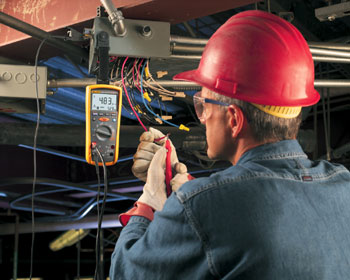How to Check a Circuit is Dead
 If you want to check a circuit is dead (not live), you should always use the three point method. First check a known live circuit, then check the dead circuit and finally recheck the live circuit. Carrying out the procedure ensures that the meter is working before and after testing for the dead circuit.
If you want to check a circuit is dead (not live), you should always use the three point method. First check a known live circuit, then check the dead circuit and finally recheck the live circuit. Carrying out the procedure ensures that the meter is working before and after testing for the dead circuit.
A few additional measurement tips to make things safe:
- always connected ground or negative clips first (remove last)
- hang or rest the test meter (try not to hold in your hand)
- use PPE - see our PPE Post
If anyone has other tips to share, please add in the comments below.